Using meticulous technique, Michael Gorban creates a realistic sense that integrates childhood memories and forgotten places from the Ukrainian village he once lived in.
Gorban’s handprint is distinctly recognizable on the canvas. He consciously uses and applies color in a premeditated manner to guide the observer’s sensitivities. Gorban paints with the highest precision. The way he sees and observes communicates keen and amazingly powerful realism.
Gorban’s handprint is distinctly recognizable on the canvas. He consciously uses and applies color in a premeditated manner to guide the observer’s sensitivities. Gorban paints with the highest precision. The way he sees and observes communicates keen and amazingly powerful realism.
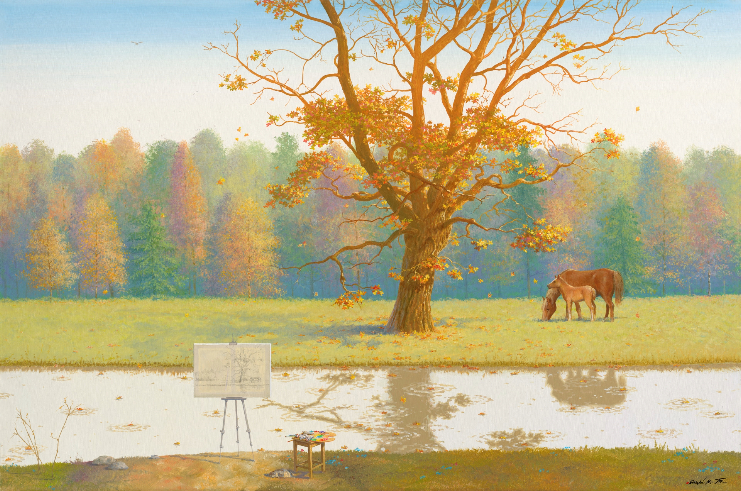
Childhood memories and forgotten places from the Ukrainian village he once lived in.
This book presents three main series on which Gorban worked between 2002 and 2008, and which continue his earlier series on similar subjects: windows – through which landscapes are seen, musical instruments, and empty chairs. The three subjects seem to be intertwined in most of the paintings, and form a distinguishing feature in the artist’s handprint.
Room interiors, still lifes and landscapes have been the most predominant subjects addressed in Western art since the 16th century. The subjects of the painting are primarily presented visually in the center of the picture. Gorban does not depict dramatic events; neither are these paintings imbued with any national-social-political-religious meaning. They are introspective paintings, sometimes devoid of movement, almost without human figures or vehicles, bearing many meanings for the artist’s sensitivities and his responses to life and reality.
Room interiors, still lifes and landscapes have been the most predominant subjects addressed in Western art since the 16th century. The subjects of the painting are primarily presented visually in the center of the picture. Gorban does not depict dramatic events; neither are these paintings imbued with any national-social-political-religious meaning. They are introspective paintings, sometimes devoid of movement, almost without human figures or vehicles, bearing many meanings for the artist’s sensitivities and his responses to life and reality.
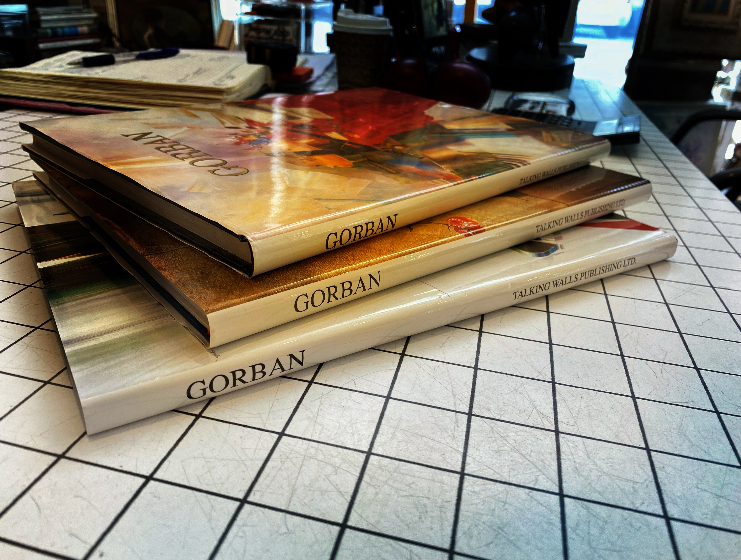
Gorban's books.
Windows Series
The window in art (starting from mythology and ancient art, the Christian world in the Middle Ages, and the modern world until the 20th century) has gained the status of a classic subject. Its tremendous visual power comes from its ability to enlarge the gaze, while also bordering it and framing the view like a picture. Windows have a dual perspective: looking from the inside out – a panoramic view, and from the outside in – a kind of voyeurism.
The window in art (starting from mythology and ancient art, the Christian world in the Middle Ages, and the modern world until the 20th century) has gained the status of a classic subject. Its tremendous visual power comes from its ability to enlarge the gaze, while also bordering it and framing the view like a picture. Windows have a dual perspective: looking from the inside out – a panoramic view, and from the outside in – a kind of voyeurism.
The window motif, woven throughout Gorban’s work, carries a personal, autobiographical outlook, through which he expresses in different ways his approach to the complex connection between the inner and the outer. The reciprocal relations between the warm, protective inside surroundings and the threatening outside world, between the suffocating closed space and the expanses of dream and passion, and on a higher level between body and soul, have won innumerable creative treatments. Especially in Romantic Germanic painting, the window opening from the room to the landscape expresses the ideal, metaphorical yearning, and spiritual passion, whereas in French painting the window opened to the outside strengthens the intimate atmosphere prevailing in the painting. In Gorban’s work, the outside is not an “intruder” on the inside. The inside/outside relations are always preserved in a balanced way.
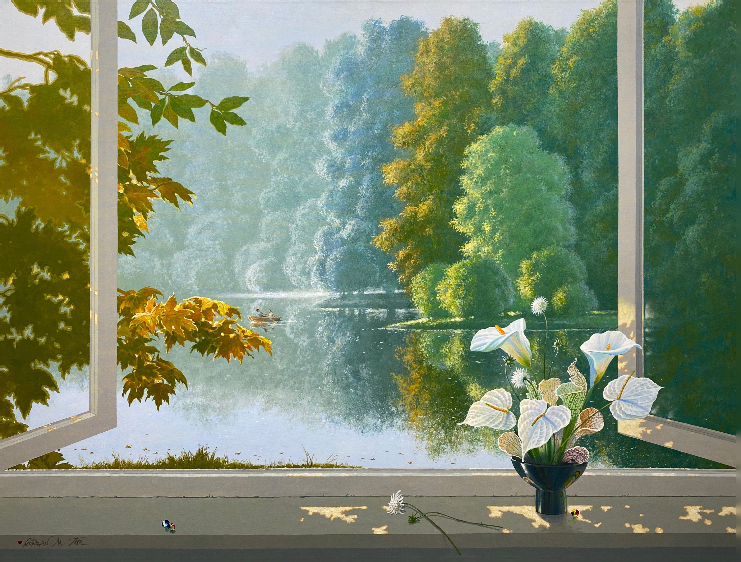
The window symbolizes many other contrasts: light and darkness (the metaphorical counterparts of which are good and evil), open and closed (life and death), wholeness and fragmentation, presence and absence. The windows denote the eyes, the spaces between external, physical reality and internal, emotional-spiritual actuality, while the window shutters alternately summon and reject the glance seeking to penetrate inward. The window is also considered to represent the feminine, in an approach epitomized in Freud, for whom the room is the woman; and the openings – whether window or door – are the female genitalia . Additionally, the window serves as a true measure of the openness, freedom and security we feel in our environment. This subject taken from daily life is suffused with multiple hidden and complementary meanings.
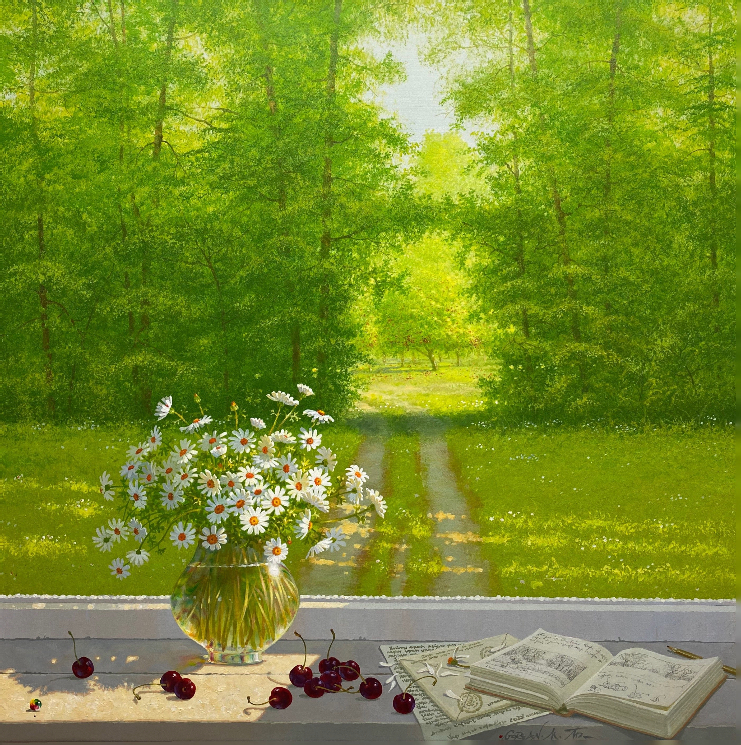
The description of reality is influenced by the artist’s thoughts, feelings and imagination. Gorban, in his paintings, looks at reality, but edits it for his own needs, while accenting the qualities of the artistic medium. The window actually becomes a mirror distortedly reflecting reality. According to Gombrich, the nature replicated in art always reflects the artist’s soul and tendencies, and therefore also his moods . Gorban does not imitate nature; he retains its character and uses it as raw material for self-representation based on personal experiences, thereby reflecting a manipulated reality that is filtered and reorganized through the artist’s subjective eyes. In this manner, he shows us less of external reality and more of himself, while expressing the world as seen through the personal filter of thought, imagination or emotion. Reality becomes personal expression. Paul Gauguin said, “When I want to see, I close my eyes,” meaning that his inner reality is the impetus for describing outer reality. Pablo Picasso also claimed, “I paint forms as I think them and not as I see them.”
Since painting is not objective, the artist’s presence in paintings of this kind is paramount. Gorban’s handprint is clearly brought out and shows spectators only the parts of reality that are most significant in his eyes. Rather than describing true reality, Gorban prefers to present his interpretation of reality, in order to adapt it to his own views. Albert Camus, in his essay “The Rebel,” quoted Nietzsche as saying, “No artist tolerates reality.” Camus added, “No artist can relinquish it. The artist builds the world anew, at his own expense.
The painting’s composition is an act of highly complex thought that includes actions that are at once conceptual and practical, rationalistic and intuitive, conscious and unconscious. In this process, the artists organizes, adds, removes, alters and completes the form, location and color of details, to transfer reality onto the canvas. The conscious choices of segments of reality have special significance and become a symbol representing not only themselves but also bearing new meanings within the new connections and combinations.
The painting’s composition is an act of highly complex thought that includes actions that are at once conceptual and practical, rationalistic and intuitive, conscious and unconscious. In this process, the artists organizes, adds, removes, alters and completes the form, location and color of details, to transfer reality onto the canvas. The conscious choices of segments of reality have special significance and become a symbol representing not only themselves but also bearing new meanings within the new connections and combinations.
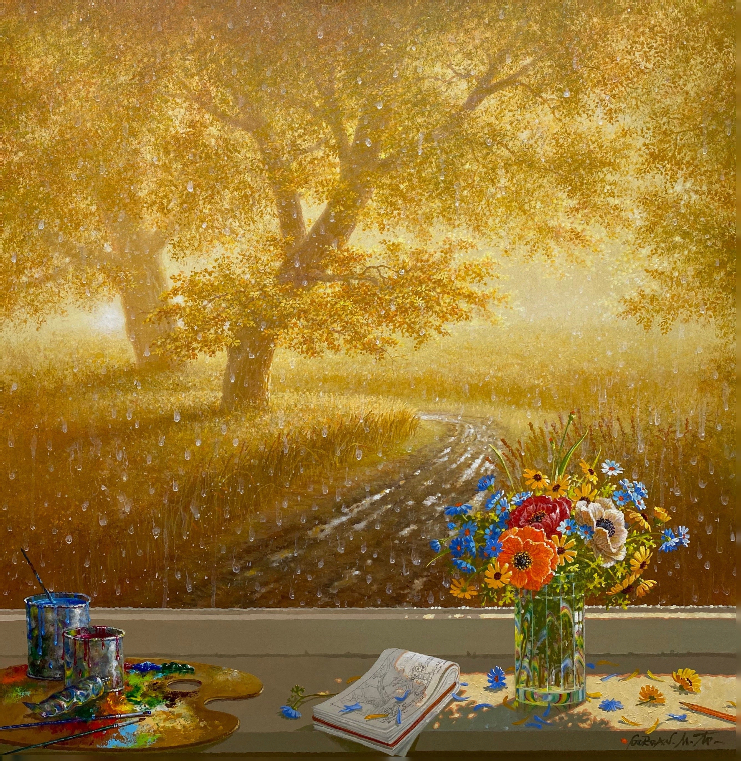
The sights seen through the window, reflected through the artist’s emotional mirror, express his soul, his imagination and his world. The work is perceived as a means of conveying the subject, with a conscious use of painting techniques such as line, color, physicality, composition and the like. Gorban, who paints mostly from the inside out and not the opposite, infuses new meaning in the painting when the windows are covered, closed or slightly opened and the entrance of light is blocked. This explores the various meanings of what is inside, as well as the form of light infiltration or the casting of its shadow. The light that breaks through the window is sometimes swallowed up by the gloom pervading the room, or falls on different surfaces and intensifies the shadows.
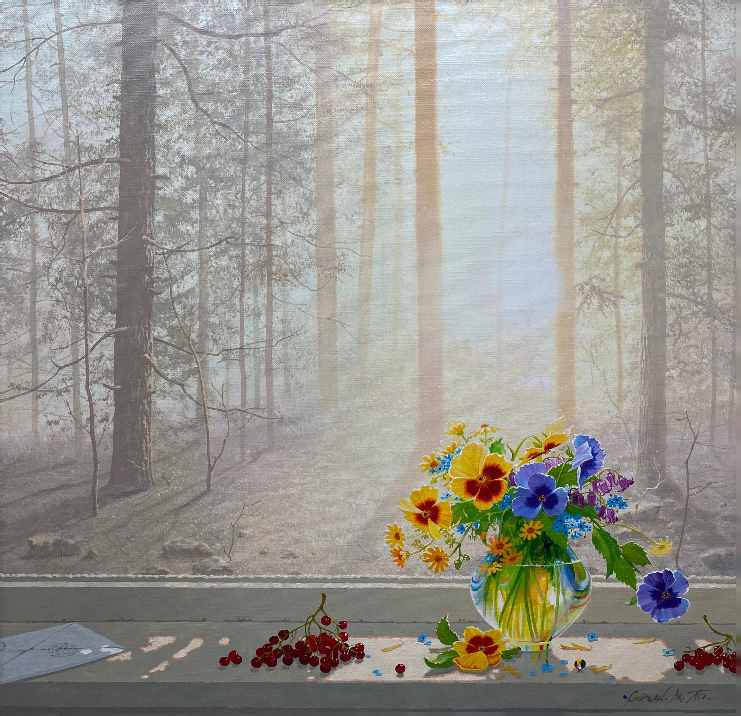
Chairs Series
The empty chair motif is especially prominent and integrated into many paintings. In some of the paintings it appears in combination with still life, whereas in others a musical instrument is resting on it or leaning against it. Sometimes the chair is positioned in the landscape with a person seated on it and playing, and sometimes the chair is floating in the space of the painting.
The empty chair motif is especially prominent and integrated into many paintings. In some of the paintings it appears in combination with still life, whereas in others a musical instrument is resting on it or leaning against it. Sometimes the chair is positioned in the landscape with a person seated on it and playing, and sometimes the chair is floating in the space of the painting.
The empty chair is a subject that has received a great deal of treatment in 20th century art. It has been ascribed various existential or metaphysical meanings that express feelings of alienation or longing for sanctity. The holy chair has undergone a process of secularization and the emphasis on it as a functional receptacle shifted beyond its meaning as an aesthetic object and artistic raw material. Over time it was attributed with many metaphoric and symbolic associations.
The chair is valuable as a motif woven throughout human history in all places and times, and serves as a status symbol. The annals of chairs are like the annals of the world. The chair’s presence and necessity testify to intense reciprocal relations. The empty chair has been portrayed in every artistic style developed in the 20th century. Vincent Van Gogh, Paul Gauguin and Henri Matisse are all artists who frequently worked on the empty chair motif at the beginning of modern art. They created a revolution in the form of the chair, which is a portrait and object substituting for man. Pop artists such as Robert Rauschberg, Richard Hamilton and Andy Warhol presented the object as a compulsive modern commodity or as representing the power of destruction. For the surrealist René Magritte, the empty chair is floating.
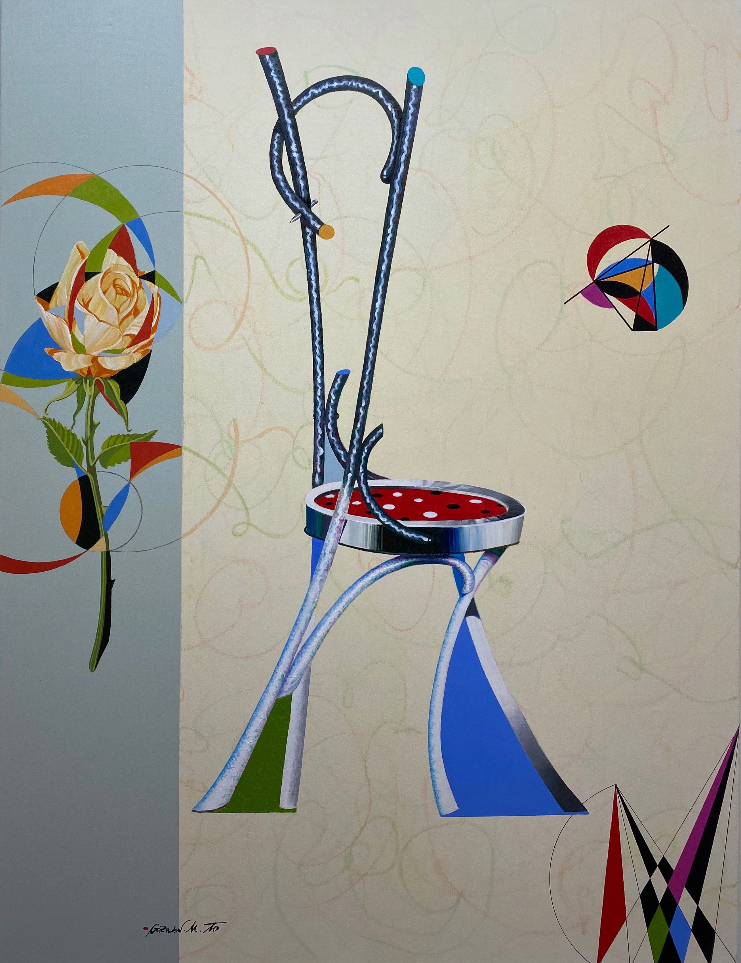
Is the chair a self-portrait of the artist? Of the chair’s owner? Actually, through the empty chair, the artist expresses the whispers of his soul, his way of thinking, and his unique artistic style. The chair – a practical, manmade piece of furniture, is turned from a useful object into a metaphor expressing emotional, cultural and existential states.
Gorban’s chair, symbolizing man’s footprints, is perceived as being full of references to its vanished owners. Tension is consequently created by the opposites of present/absent; and a dialogue takes place about man’s lack of harmony with his world.
One’s gaze is concentrating on an empty object. The viewer focuses on a subject that is absent, or present in the emptiness by its very absence. The question arises as to whether the absent dominates the present, making it disappear and turning it into a lack of presence, and therefore the absent actually becomes the only thing present; or if the present dominates the absent and turns it into something secondary, a possible but unfulfilled presence, or a reality that has been lost.
One’s gaze is concentrating on an empty object. The viewer focuses on a subject that is absent, or present in the emptiness by its very absence. The question arises as to whether the absent dominates the present, making it disappear and turning it into a lack of presence, and therefore the absent actually becomes the only thing present; or if the present dominates the absent and turns it into something secondary, a possible but unfulfilled presence, or a reality that has been lost.
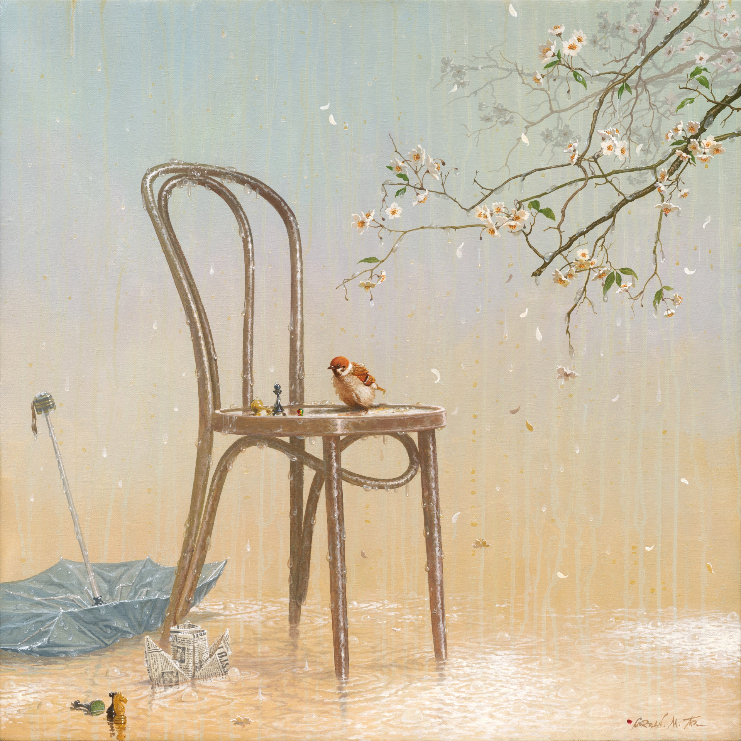
Musical Instruments Series
Most of the interior pictures present still life near the window, on a chair/table near the window, and on the windowsill itself as well. The interior is intimate and serene, despite the lack of human presence. Sometimes a person seated on a chair and playing an instrument appears in a landscape. At times an empty chair is seen next to the person playing.
Most of the interior pictures present still life near the window, on a chair/table near the window, and on the windowsill itself as well. The interior is intimate and serene, despite the lack of human presence. Sometimes a person seated on a chair and playing an instrument appears in a landscape. At times an empty chair is seen next to the person playing.
The inanimate objects in the paintings, such as musical instruments, fruit, flowers, pages, ballet shoes, a paint palette, vases, and so forth, delineate the human space according to which man asserts his humanity, in relation to the memory of his uses of it, while the different objects describe moments in the unfolding of time at home.
Presenting still life, with its qualities of intimacy and closeness, next to landscape, characterized by the sense of open space, movement and remoteness, juxtaposes interior and exterior, flat and textured, free and confined.
Presenting still life, with its qualities of intimacy and closeness, next to landscape, characterized by the sense of open space, movement and remoteness, juxtaposes interior and exterior, flat and textured, free and confined.
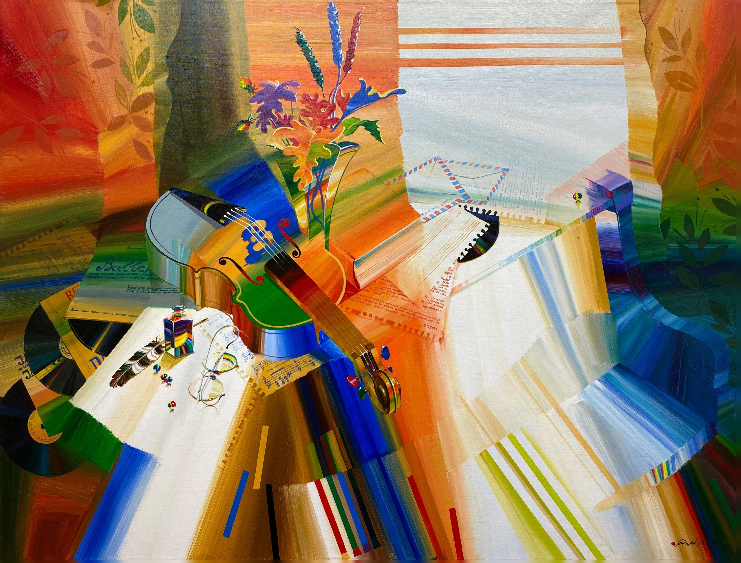
The formalistic solution of presenting the two subjects appears in how they are situated in space. The latent power in those inanimate objects implies something beyond their existence and the poetic nature of day-to-day reality.
Paint and the paintbrush are like Gorban’s musical instruments. The atmosphere the paintings transmit and their colors are painted like music. The music brought out through the visual noise is imagined to be a jazz improvisation.
Paint and the paintbrush are like Gorban’s musical instruments. The atmosphere the paintings transmit and their colors are painted like music. The music brought out through the visual noise is imagined to be a jazz improvisation.
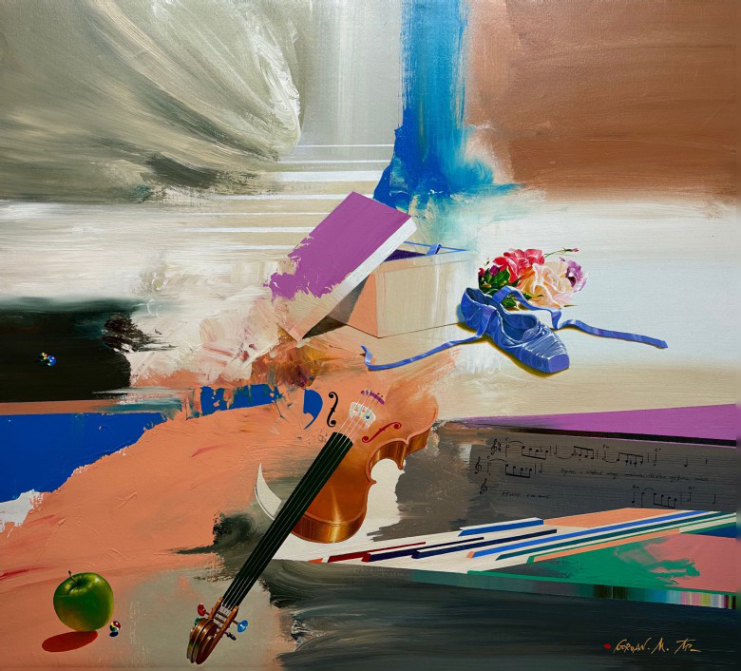
Notes:
1. Freud, S., The Interpretation of Dreams, Tel Aviv: Dvir, 1988. Chap. VI, pp 331.
2. Gombrich, E.H., The Story of Art, Tel Aviv: Am Oved, 1964. pp 803.
3. Camus, A. The Rebel, Tel Aviv: Am Oved, Sifriat Ofakim, 1974.
1. Freud, S., The Interpretation of Dreams, Tel Aviv: Dvir, 1988. Chap. VI, pp 331.
2. Gombrich, E.H., The Story of Art, Tel Aviv: Am Oved, 1964. pp 803.
3. Camus, A. The Rebel, Tel Aviv: Am Oved, Sifriat Ofakim, 1974.



